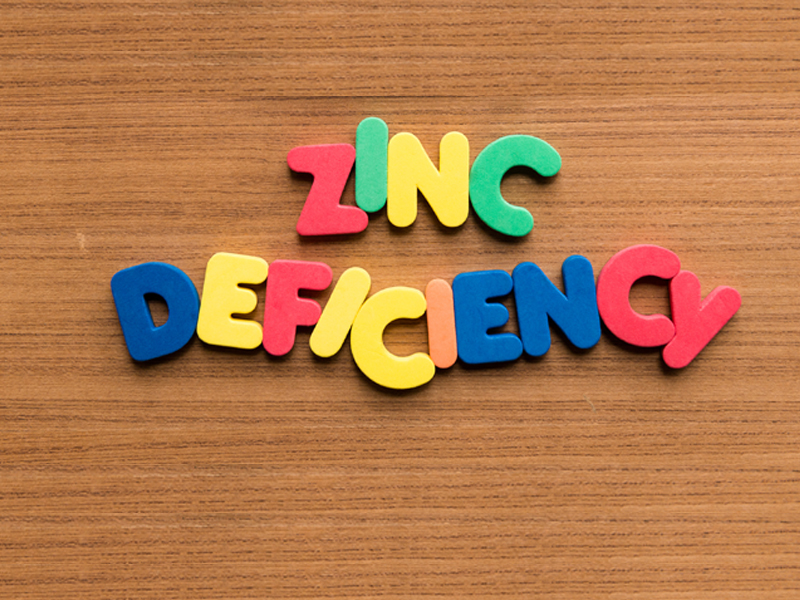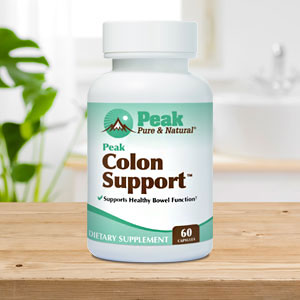Get Easy Health Digest™ in your inbox and don’t miss a thing when you subscribe today. Plus, get the free bonus report, Mother Nature’s Tips, Tricks and Remedies for Cholesterol, Blood Pressure & Blood Sugar as my way of saying welcome to the community!
At-home taste test can reveal zinc deficiency

Did you know that zinc is found in every cell of your body? And your body doesn’t let any of it go to waste. It uses zinc to fight off bacteria and viruses, make protein and DNA, heal wounds and much more.
So it’s no surprise that low zinc levels lead to less-than-optimal health. In fact, low levels of zinc put you at risk for a laundry list of serious diseases: Alzheimer’s, anxiety, depression, diabetes, macular degeneration, pneumonia and even cancer.
And depending on your diet, lifestyle, age or health problems, you may not be getting enough of this essential mineral.
If you’re on a vegan or raw food diet, for example, you could be deficient in zinc. That’s because a lot of dietary zinc comes from meat or animal products — but also because the high amount of phytic acid in grains and beans binds to zinc and prevents adequate absorption.
But there are a lot of other groups at-risk for zinc-deficiency too, like:
- People 65 years or older
- Women who are pregnant or breastfeeding
- People with anorexia
- People with ongoing diarrhea
- People with inflammatory bowel diseases like Crohn’s disease and ulcerative colitis
- People with sickle cell anemia
- People with chronic renal disease
- Alcoholics
- People taking certain medications (like tetracycline and quinolone antibiotics, bisphosphonates, penicillamine, diethylenetriamine pentaacetate, the anticonvulsant sodium valproate and diuretics).
Now, chances are you don’t have a major zinc deficiency. That’s extremely rare and usually genetic. But marginal zinc deficiencies affect more than 2 billion people worldwide. Some symptoms of marginal zinc deficiency include:
- Frequent infections
- Weight loss
- Emotional imbalance
- Dermatitis
- Hair loss
- Impaired taste
- Night blindness
- Poor appetite
- Slow wound healing
If you have one or more of these symptoms or if you fall into one of the groups most at-risk for zinc deficiency, you may want to look into your zinc levels a little further. Luckily, there’s a simple, inexpensive test that can help you find out if you’re zinc deficient… and it doesn’t even involve a trip to your doctor’s office.
All you need is a bottle of liquid zinc sulfate, which you can buy at your local health food store or online. Once you have a bottle on-hand, put a teaspoon of it in your mouth and hold it there for 10 seconds. Now, you should know, that zinc has a very unpleasant flavor… unless, of course, you’re extremely zinc deficient. If your deficiency is bad enough, you may not taste anything at all…
Here’s how to interpret the results of the test:
- If you’re extremely deficient in zinc, a spoonful of zinc sulfate will taste like water.
- If you have a moderate zinc deficiency, the zinc sulfate will taste like nothing at first, but will gradually begin to taste metallic or dry.
- If you notice an unpleasant taste right away, but the taste gets a lot worse within 10 seconds, then you have a mild zinc deficiency.
- If your spoonful of zinc tastes bad from the get-go and doesn’t get any worse after 10 seconds, then you probably have healthy zinc levels.
Now, this test isn’t the “be all end all” authority on zinc deficiency. There are other health reasons why you may not be able to taste zinc sulfate. But if you can’t taste it, you know it’s time to get yourself to a trusted health professional or dietitian to get your zinc levels sorted out. And always make sure you’re getting enough dietary zinc — between 15 and 40 mg per day every day.
Editor’s note: Are you feeling unusually tired? You may think this is normal aging, but the problem could be your master hormone. When it’s not working, your risk of age-related diseases skyrockets. To reset what many call “the trigger for all disease” and live better, longer, click here to discover The Insulin Factor: How to Repair Your Body’s Master Controller and Conquer Chronic Disease!
Sources:
-
“Zinc.” National Institutes of Health. https://ods.od.nih.gov. Retrieved August 16, 2016.
-
“Zinc.” Oregon State University. The Linus Pauling Institute. http://lpi.oregonstate.edu. Retrieved August 16, 2016.
-
W. Evans. “Zinc and its deficiency diseases.” Clinical Physiology and Biochemistry. 1986;4(1):94-8.
-
J. Russo. “Decreased Zinc and Increased Copper in Individuals with Anxiety.” Nutrition and Metabolic Insights. 2011; 4: 1–5.
-
S. Prasad, F.W. Beck, D.C. Snell, O. Kucuk. “Zinc in cancer prevention.” Nutrition and Cancer. 2009;61(6):879-87.
-
“Figure Out If You’re Zinc Deficient With This Simple Home Test.” Andrew Perlot. YouTube. https://www.youtube.com/watch?v=LUTzX3h8ypU. Retrieved August 16, 2016.













